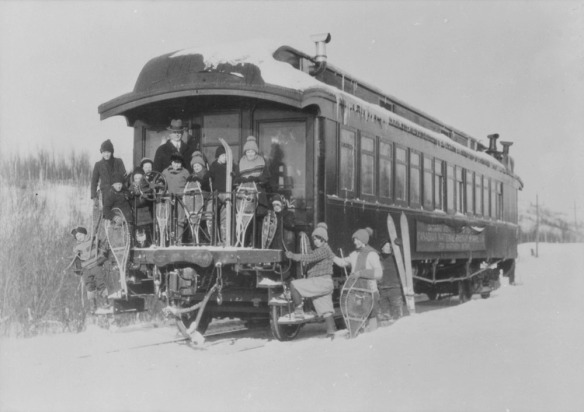Snowshoes distribute a person’s weight over snow, enabling one to walk without sinking too deeply.

Aboriginal woman making snowshoes, Pointe Bleue, Quebec (MIKAN 3367092)
Traditional snowshoes are made with wooden frames and leather strips for webbing and boot bindings. Modern equivalents use metal or synthetic materials, but follow similar design characteristics to their predecessors. Early snowshoe design in North America spans the continent where regular snowfall occurs. The shapes and sizes vary dependent on the location. Snowshoes are available in round, triangular, and oval shapes, or can be very long. Each design addresses different types of snow, whether powdery, wet or icy. First Nations and Inuit communities are known for their design and use of snowshoes.

Styles of snowshoes (MIKAN 3401671)

Styles of snowshoes (MIKAN 3401670)
European settlers were quick to adopt snowshoes for travel, hunting, and even military purposes. Snowshoeing clubs in Canada were started the mid-1800s for sport and leisure activities—leading the way for these unique aboriginal inventions to become a fixture in Canadian society.

Canadian National Railway School Car, Capreol, Ontario (MIKAN 3381288)

Reblogged this on Business Startup-Bay Area.
Pingback: Libraries and Archives Canada Puts Up Snowshoe Image Collection on Flickr | ResearchBuzz: Firehose
Pingback: Artists, Codex Quetzalecatzin, Snowshoes, More: Friday Buzz, November 24, 2017 – ResearchBuzz
Great pics